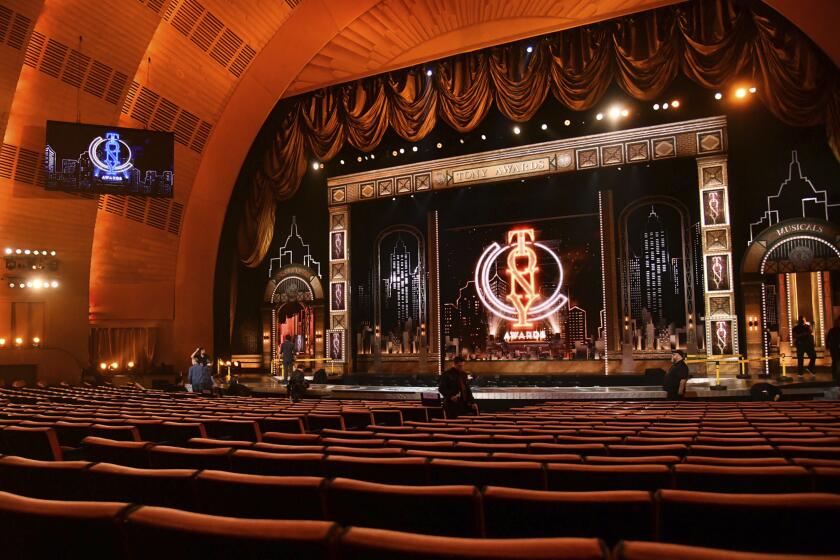Arts Funding Fuels a Dynamic Society
- Share via
When I was the director of design at the National Endowment for the Arts, I spent a lot of time talking about why the arts mattered. My point was, and is, “you can either have elevator music or Arnold Schoenberg’s music.” The first is wholly a product of the market -- easy listening. But Schoenberg needs a little help both to get made and to get heard.
Today, the NEA’s budget is small, just $121 million in the $388-billion domestic spending bill Congress sent to the president last week. Even so, people suggest, “Why not privatize it? Take taxpayers out of the art business.”
Here’s why not: It is of more than symbolic importance that the country support its creative voices. At the most pragmatic level it is good for business -- furthering tourism, urban revitalization and exports -- and arts organizations all over the country have the statistics to prove it. But it is much more important than that: The funds from the NEA are catalytic; they can provide incentives for exactly what the market shuns: the difficult, the new.
During my NEA tenure, for example, the endowment founded the New Public Works program, which in its three-year run funded more than 30 national design competitions for public projects. These included the Booker T. Washington Arts Magnet High School in Dallas, an arts library for the Brooklyn Academy of Music cultural district and a waterfront art park in Seattle. It engaged such young designers and firms as Enrique Norten, Weiss/Manfredi, Brad Cloepfil, Koning Eizenberg and James Corner. And it generated ideas that reinvented public institutions and the way cities, suburbs and public space could be made and used. The Brooklyn project, for example, reinvents the library by combining advanced information technology with art studios and theaters.
The goal was to help truly innovative work get done, rather than reproducing the market, which, left to its own devices, props up wan images out of Architectural Digest and lifestyle TV. Even if architectural designs look beautiful to many of us in their familiarity -- cloaked, for example, in the fiction of 19th century village life -- they don’t necessarily represent the most appropriate or best course for today or tomorrow.
The fundamental truth is, the arts provide us with difficult work and ideas. Not that serious artists or designers are seers, or that they have a corner on righteousness, but consciously and unconsciously, they take on the task of seeing the world anew, finding perspectives that reflect our experiences and realities back to us in ways we would never discover without them.
It is this complex vision that separates Montovani from Mahler or Philip Roth from Nancy Drew’s creators. If stories, music, buildings and pictures merely replay our own notions and cultural mythologies, then they reduce us to the simplest of equations, mirroring too closely the calming voice of advertising copy, the seductions of the market. We are sold an image of a culture that is static, rather than constantly in flux, changed by our lived experience.
Government funding for the arts is not a luxury. As a nation we must help the difficult to get made and get heard. Scrapping the NEA, “privatizing” it, risks pushing the arts ever closer to the embrace of the market and away from its real purposes. Even when “the difficult” appears to be politically unjustifiable, the nation can survive the debate, sustain the critique. After all, our country was founded on a revolutionary platform.
Dissent and difference is our national ethos. Echoing the American pragmatist John Dewey in “Art as Experience”: When art becomes merely a beauty parlor for society, neither art nor society is safe.
More to Read
The biggest entertainment stories
Get our big stories about Hollywood, film, television, music, arts, culture and more right in your inbox as soon as they publish.
You may occasionally receive promotional content from the Los Angeles Times.










